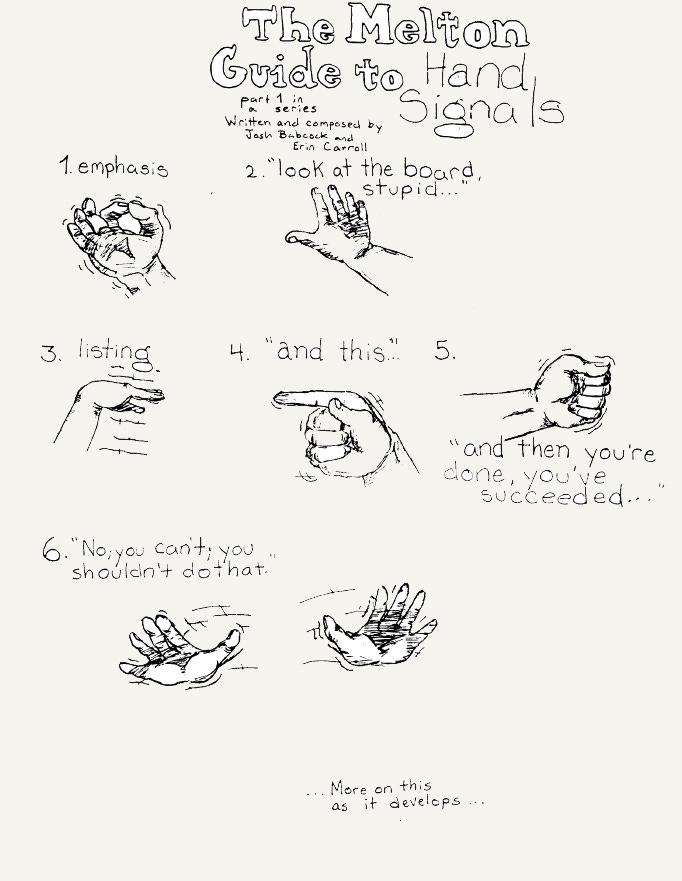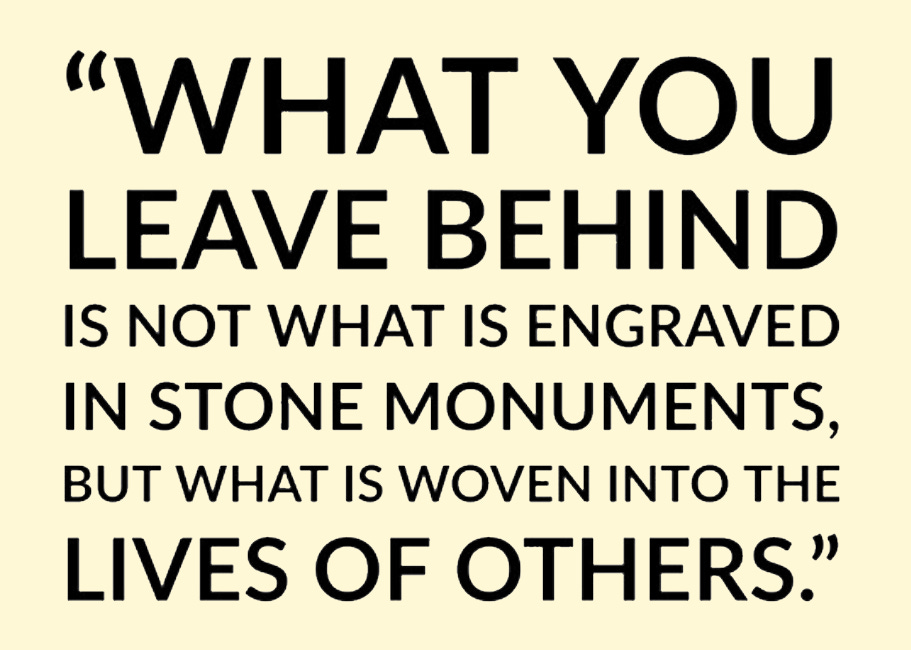Never learned this lesson, and I hope students Josh and Erin are still thinking outside of the box
Growing up my mom always told me not to talk with my hands--even though I produced puppet shows and newspapers for the neighbor kids, and was an actor and journalist after that.
Rumors were swirling that two students at our Stanford summer journalism workshop years ago were passing around a cartoon about me, but via “the grapevine” they were afraid to show it to me.
We taught weeklong workshops for high school students on yearbook and newspaper staffs how to produce awesome, groundbreaking, award-winning publications, so it wasn’t like they were getting a grade for their work.
The other instructors persuaded them to show it to me, because they knew me. When I saw it, I just started laughing, because I was already self-aware that I did all these things, and then some. I just didn’t think many people noticed.
When I reflected upon it later (and obviously saved a copy because they had printed one for every team) I realized it was one of many tools, other than speaking, that are literally cues to students about what was important and my level of conviction on given subjects.
I loved that they noticed it, thought it was funny, and went for the gag. These are my kind of people. They are quick-witted critical observers with a sense of fun producing publications in a fast-paced, deadline-driven, occupation. They were open to change, and here’s how we did it—and the process works.
I wasn’t the only teacher, and we were developing a shorter, leaner workshop that brought a team of people from each publication together to make decisions to take back to the staff. The principles and approach were wildly successful. If you want to create a change in your organization, this is the way to do a workshop:
focused (the initial three-day workshop will deal only with publication design)
informative (concept-based or principle-based instruction and examples)
hands-on (delegates will make frequent decisions and try out what they’ve learned immediately. At least 50 percent of the time delegates spend at the workshop is project-oriented)
goal-oriented (they’ll leave with a publication design plan and 3-5 personality words to describe the finished project. My own students turned this into a profitable business.)
personal (has a low student to teacher ratio—one-to 25 or less) Four or five instructors take part in this workshop to assure lots of individualized help for the participants. A limit of 100 or 125 students makes the learning experience rewarding for all.
interactive (plenty of opportunity for individual help and conferencing)
growth-oriented (frequent personal critiques and answers from five instructors)
This is the conventional wisdom at most workshops throughout the United States and in Europe: Hire the best teachers your money can buy, teach the content, and students will figure out how to apply it. This approach hasn’t worked out well. As we thought about the students and schools who had been to workshops that we had been hired to teach, we began to realize their publications did not change all that much as a result of our one-week cover-all-the-bases-at-breakneck-speed workshops. We also asked ourselves: “If everyone enjoys learning how to design great publications, why do we always put that off until last? Why don’t we do the fun stuff first?”
People come to a workshop with many needs. It is not always possible to focus on the variety of needs with so many people and so few instructors and time. The one area that most student publications seem to have the most difficulty changing is publication design. This area, then, became the most obvious place for us to initially focus our attention: on how the publication itself was organized and presented to the reader. In today’s sophisticated media environment, everyone has access to publishing technology. Anyone can produce a document in no time. There is much competition for the reader’s attention. We wanted to help them make sense out of all that competition.
Our original idea was to go “back to the basics,” the 3R’s of journalism, and our mission was to work with students to rethink, refocus, and redesign their publications.
We focus up close and personal on one very important aspect of student publications: Design, and build a workshop where students and advisers had ample opportunity to try out their ideas and have experts on-call to help them through the process of redesigning their publications.
Students, in school teams, will:
create a publication philosophy statement
create a publication personality profile
create a format that reflects the publication’s philosophy and personality
The instructors, reflecting on workshops they had taught for years, concluded that you cannot teach a student to become a better writer/editor in a one-week workshop and expect that person to be able to apply what they have learned and convince others it will work. There had to be a better way for our students to learn, and for our students to implement the changes.
One of the problems we faced at workshops is the adviser of the publication who does not always accompany students. The resulting problem is that the student who does attend has an uphill battle introducing new ideas to everyone else who didn’t go — including the adviser. That is the reason we cut the adviser’s tuition in half if that person brings students.
We believe making change happen is a team effort. We want to bring together all of the people, experts and facilities necessary for our students to succeed. Information must be structured for quick, mini-lesson delivery, followed immediately by an opportunity to discuss and make decisions in small table groups. Once teams develop their initial statements, we move to the creative phase of their redesign. They must take their initial statements and ideas and translate those into visual representations. They must learn to go outside the normal boundaries to explore new arrangements of information.
We base the curriculum on our study of learning styles and creativity. This research played an important part in realizing we could totally rethink how we expect students to learn and how we expect we should teach. Our teaching model is based on David Kolb’s work in experiential learning.
We were also influenced by research indicating that people tend to remember what is at the beginning and end of a presentation best; therefore, it is best to keep presentations to a single concept which is immediately applied by the students. They will remember much more if we do two short presentations in an hour with a short break between each. We also had studied how to use movement to help students improve their reading, writing, and thinking skills during the process.
We were also influenced by the power of encouragement and the power of positive thinking. We incorporated the development of self-esteem and encouragement during our workshop. We wanted people to see what a pleasure it is to work in a positive, productive environment.
Other workshops traditionally last one week and are heavy on lecture and slides. There are usually more than 200 people who attend those other workshops, making individual projects difficult to assign and even more difficult to critique. Delegates usually spend a great deal of time passively listening and taking notes.
We developed the half-day evaluation card. Rather than wait until the end of the workshop, we ask students twice a day for their feedback. Their comments go on a 3x5 card and are completed just prior to breaking for lunch and breaking for the day. Over lunch and dinner, the instructors review the cards and make any necessary adjustments to the next session’s plan. The cards are different colors for different sessions so we can review them in the post-workshop evaluation session in planning for our next workshop.
We compare the opening session activity with the closing session activity. Briefly, groups brainstorm a list of design trends which are then to be used to critique designs of all publications in an all-group session. At the conclusion of the workshop, groups share their new designs in an all-group presentation. We see dramatic changes between the two activities.
An evaluation questionnaire at the conclusion of each workshop asks students for their comments relating specifically to the goals mentioned in a previous section, ranking their reaction from 1 to 5. We are most interested in the open-ended responses, since we don’t anticipate major problems as a result of our half-day evaluation process.
We request a copy of their publication in October to assess how well they have implemented their plans. (We make copies of their plans before they leave.) We review the publications at the JEA convention in November to assess how well the school is able to implement the changes they develop in a production environment.
A follow-up questionnaire (to accompany the request for a copy of their publication) is sent in October. We were most interested in the open-ended responses.
So, long story short, our workshop students were encouraged to think outside the box, and that made all the difference!
I hope students Josh and Erin, and all the others, are still up to good trouble. I only wish there had been a sequel!
-30-
Thanks to you we now have more than 260 subscribers and followers. When you Subscribe you get the latest posts in your email so you never miss a post. Posts and Notes are always free when you Subscribe. When I turned on payments I noticed there are more features under the hood available. We even reached #81 and Rising in Education last week.
Coaching is a great teaching strategy
A bench was dedicated a few years ago now to honor my high school journalism, drama, and American Literature teacher Keith Barnhart. It faces toward his old classroom windows at Cloverdale High School in Cloverdale, California, a one-story high school in wine country with several wings and about 300 students, and lower windows that you can still push op…





